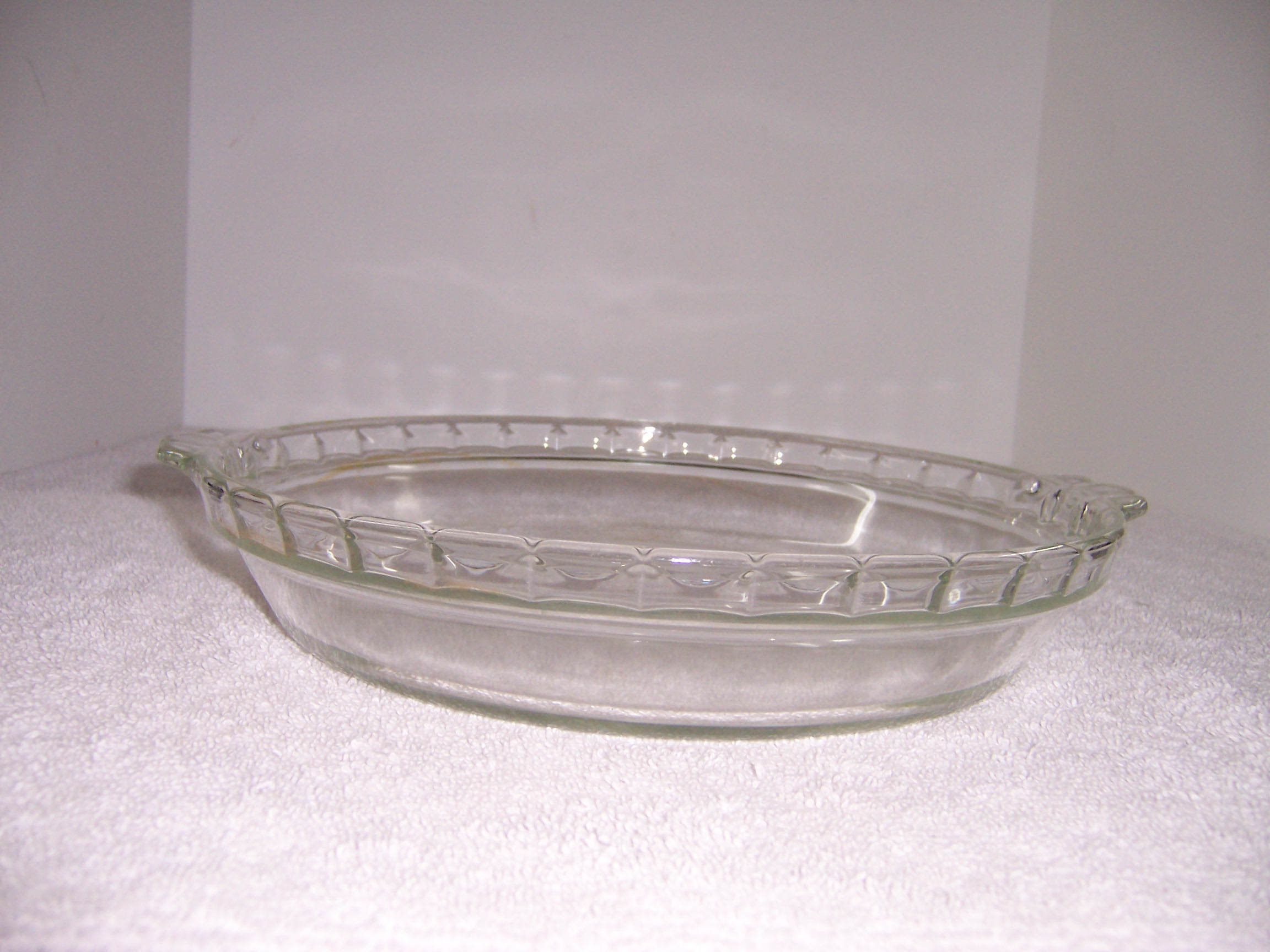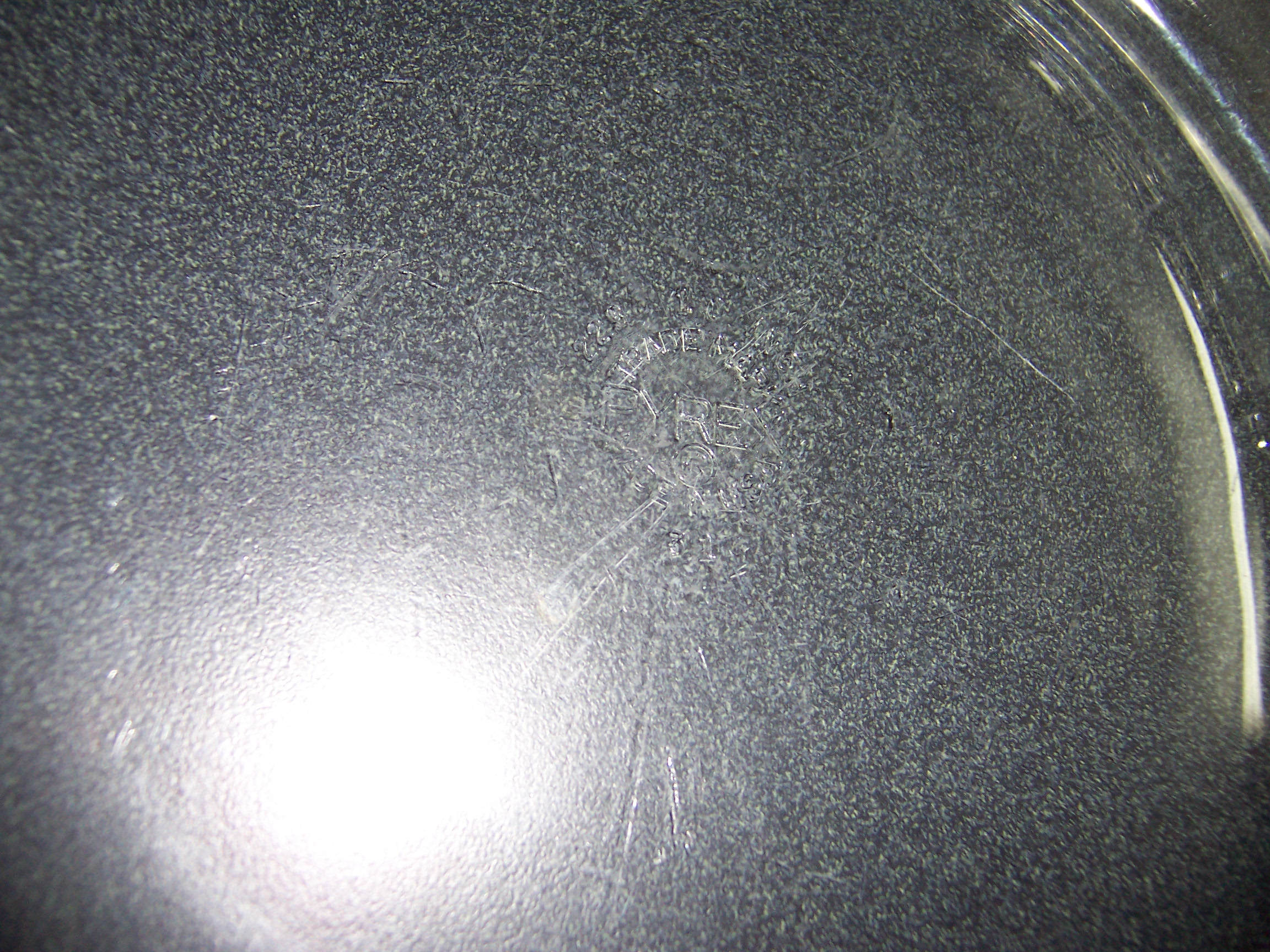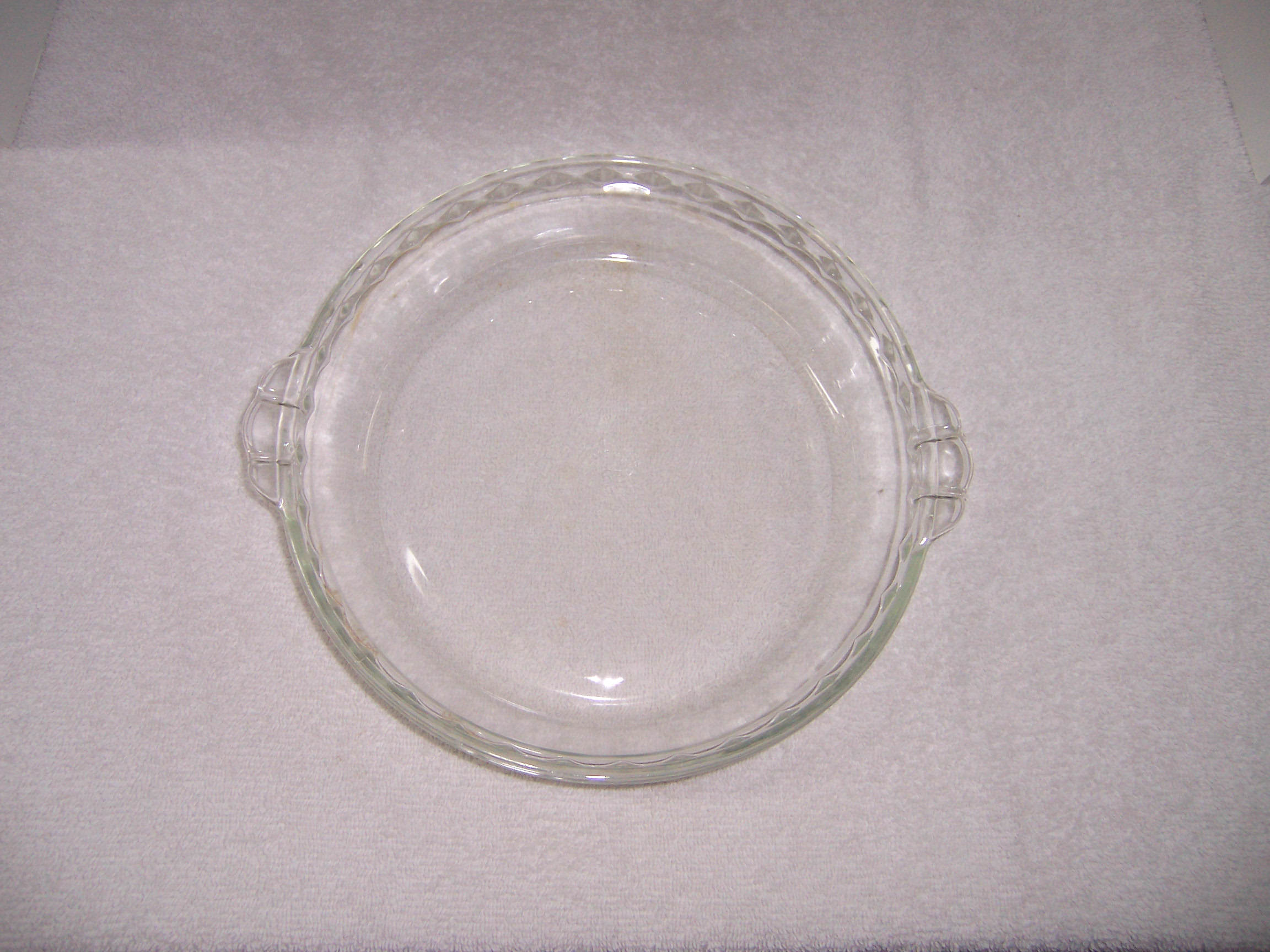Description
Pyrex Round Pie Baking Dish in good condition. It measures 1 7/8″ high x 11″ x 9 7/8″.
Pyrex (trademarked as PYREX) is a brand which was introduced by Corning Incorporated in 1915 for a line of clear, low-thermal-expansion borosilicate glass used for laboratory glassware and kitchenware. It is now made of tempered glass.
Corning no longer manufactures or markets Pyrex-branded borosilicate glass kitchenware and bakeware in the US, but Pyrex borosilicate products are still manufactured under license by various companies. World Kitchen, LLC, which was spun off from Corning in 1998, licensed the Pyrex brand for their own line of kitchenware products—differentiated by their use of clear tempered soda-lime glass instead of borosilicate.
History
Borosilicate glass was first made by German chemist and glass technologist Otto Schott, founder of Schott AG in 1893, 22 years before Corning produced the Pyrex brand. Schott AG sold the product under the name “Duran.”
In 1908, Eugene Sullivan, Director of Research at Corning Glass Works, developed Nonex, a borosilicate low-expansion glass, to reduce breakage in shock-resistant lantern globes and battery jars. Sullivan had learned about Schott’s borosilicate glass as a doctoral student in Leipzig, Germany. Jesse Littleton of Corning discovered the cooking potential of borosilicate glass by giving his wife a casserole dish made from a cut-down Nonex battery jar. Corning removed the lead from Nonex, and developed it as a consumer product.[1] Pyrex made its public debut in 1915 during World War I, positioned as an American-produced alternative to Duran.
A Corning executive gave the following account of the etymology of the name “Pyrex”:
The word PYREX is probably a purely arbitrary word which was devised in 1915 as a trade-mark for products manufactured and sold by Corning Glass Works. While some people have thought that it was made up from the Greek pyr and the Latin rex we have always taken the position that no graduate of Harvard would be guilty of such a classical hybrid. Actually, we had a number of prior trade-marks ending in the letters ex. One of the first commercial products to be sold under the new mark was a pie plate and in the interests of euphonism the letter r was inserted between pie and ex and the whole thing condensed to PYREX.[2]
In the late 1930s and 1940s, Corning also introduced other products under the Pyrex brand, including opaque tempered soda-lime glass for bowls and bakeware, and a line of Pyrex Flameware for stovetop use; this borosilicate glass had a bluish tint caused by the addition of alumino-sulfate.[3][4] In 1958 an internal design department was started by John B. Ward. He redesigned the Pyrex ovenware and Flameware. Over the years designers such as Penny Sparke, Betty Baugh, Smart Design, TEAMS Design, and others have contributed to the design of the line.
Corning divested its consumer products division in 1998, forming the company World Kitchen, LLC. Corning discontinued its production of Pyrex products, but still licensed the Pyrex brand name to other companies, including World Kitchen, and Newell Cookware Europe.[5] France-based cookware maker Arc International acquired Newell’s European business in early 2006,[6] and currently owns rights to the brand in Europe, the Middle East and Africa.[7][8]
Composition
A clear borosilicate glass Pyrex measuring cup produced by Corning (right), and a clear tempered Pyrex soda-lime glass measuring cup produced by World Kitchen (left, differentiated by its different logo and bluish tint)
Older clear-glass Pyrex manufactured by Corning before 1998, Arc International’s Pyrex products, and Pyrex laboratory glassware is made of borosilicate glass. According to the National Institute of Standards and Technology, borosilicate Pyrex is composed of (as percentage of weight): 4.0% boron, 54.0% oxygen, 2.8% sodium, 1.1% aluminium, 37.7% silicon, and 0.3% potassium.[9][10]
According to glass supplier Pulles and Hannique, borosilicate Pyrex is made of Corning 7740 glass, and is equivalent in formulation to Schott Glass 8830 glass sold under the “Duran” brand name.[11] The composition of both Corning 7740 and Schott 8830 is given as 80.6% SiO2, 12.6% B2O3, 4.2% Na2O, 2.2% Al2O3, 0.04% Fe2O3, 0.1% CaO, 0.05% MgO, and 0.1% Cl.
Pyrex glass cookware manufactured by World Kitchen is made of tempered soda-lime glass instead of borosilicate.[12] World Kitchen justified this change by stating that soda-lime glass was cheaper to produce, is the most common form of glass used in bakeware in the US, and that it also had higher mechanical strength than borosilicate—making it more resistant to breakage when dropped, which it believed to be the most common cause of breakage in glass bakeware. Unlike borosilicate, it is not as heat resistant, leading to an increase in breakage from heat stress. European Pyrex is still made from borosillicate.[5][13][14]
The differences between Pyrex products depending on manufacturer has also led to safety issues—in 2010, the Consumer Product Safety Commission received several complaints by users reporting that their Pyrex glassware had shattered at high temperatures. The consumer affairs magazine Consumer Reports investigated the matter after obtaining copies of the complaints, determining that the complainants had in fact been using World Kitchen-produced Pyrex labeled products manufactured with lower cost tempered flint glass, and had incorrectly assumed that they would have the same characteristics and strength as their borosilicate counterparts




